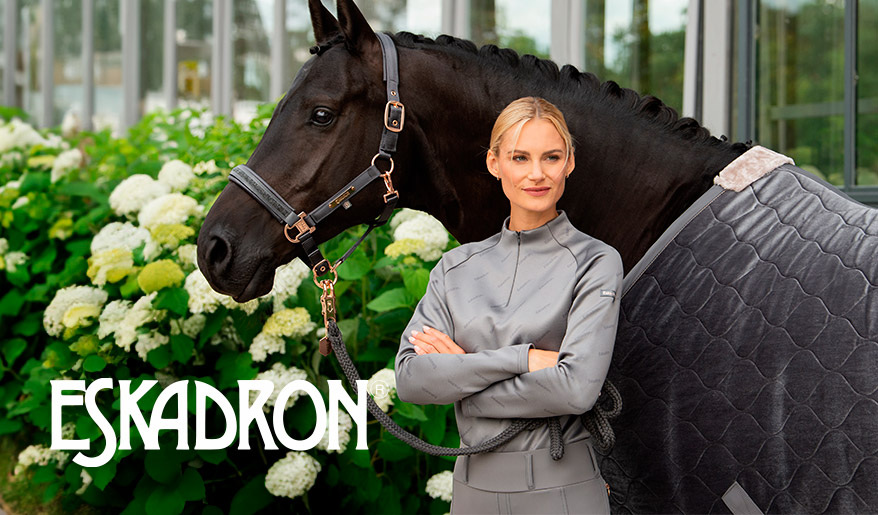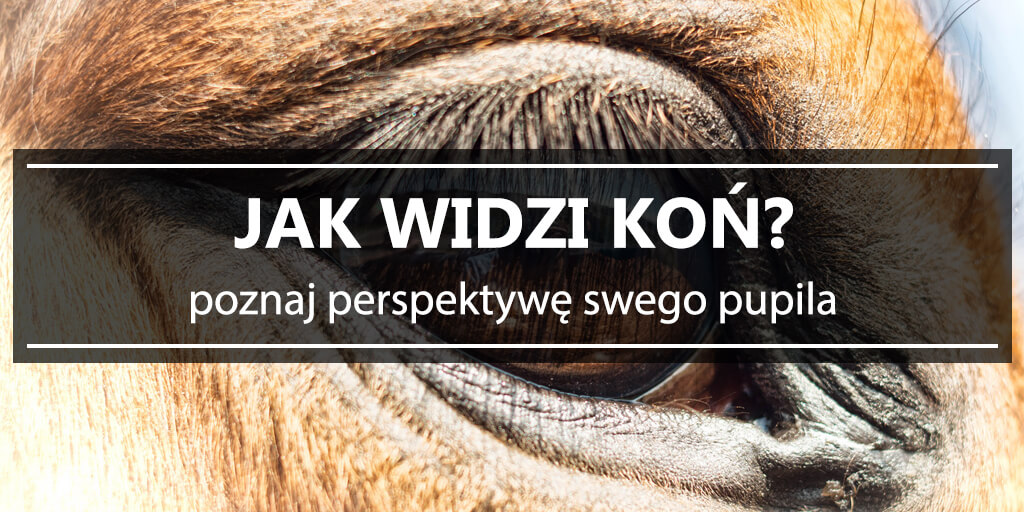
Autor zdjęcia:
Steve Wake |
CC BYKoń należy do grupy ssaków posiadających największe oczy. Są one mniej więcej półtora raza większe niż oczy dorosłego człowieka. Ale jak tak naprawdę widzi koń? Czy posiada zdolność rozróżniania kolorów? Czy widzi jeźdźca na swoim grzbiecie? Postaramy się odpowiedzieć na wszystkie te pytania.
1.Fizjologia - budowa oka konia i jego działanie
Gałka oczna konia jest zbudowana z trzech błon: zewnętrznej (włóknistej), która zawiera rogówkę; środkowej (naczyniowej), która zawiera tęczówkę oraz wewnętrznej, czyli siatkówki. Wspomniana rogówka to przezroczysta część gałki ocznej, przez którą widać tęczówkę i źrenicę. Rogówka nie jest unaczyniona, a jej zadaniem jest skupianie promieni słonecznych. Jako przedłużenie twardówki, zewnętrznej włóknistej warstwy gałki ocznej, zapewnia ciągłość strukturalną i chroni zawartość wewnątrz gałki. Błona naczyniowa zawiera więzadła przytrzymujące soczewkę, której funkcją jest skupianie światła na siatkówce. Siatkówka zawiera receptory wzrokowe – co umożliwia widzenie.
Oczy konia są usytuowane po bokach głowy (obu stronach głowy), dlatego widzi on prawie wszystko z tyłu i z boku, ale obraz jest płaski i nieostry. Do widzenia głębi konieczne jest widzenie obuoczne, stąd u koni problemy z chęcią przejścia przez rów z wodą czy kałużę. Koń dużo dokładniej zauważa to, co znajduje się w trójkącie przed głową (trójwymiarowy oraz ostry obraz). Za koniem, dokładnie w linii ogona znajduje się tzw. pole martwe – przestrzeń, której koń nie widzi wcale. Stąd bierze się niejednokrotne powtarzanie adeptom, że do konia nie wolno podchodzić od tyłu, bez odpowiedniego uprzedzenia zwierzęcia, gdyż może zadziałać ono instynktownie – w wyniku paniki i zaskoczenia, chcąc się bronić „zafunduje” nam kopniaka.
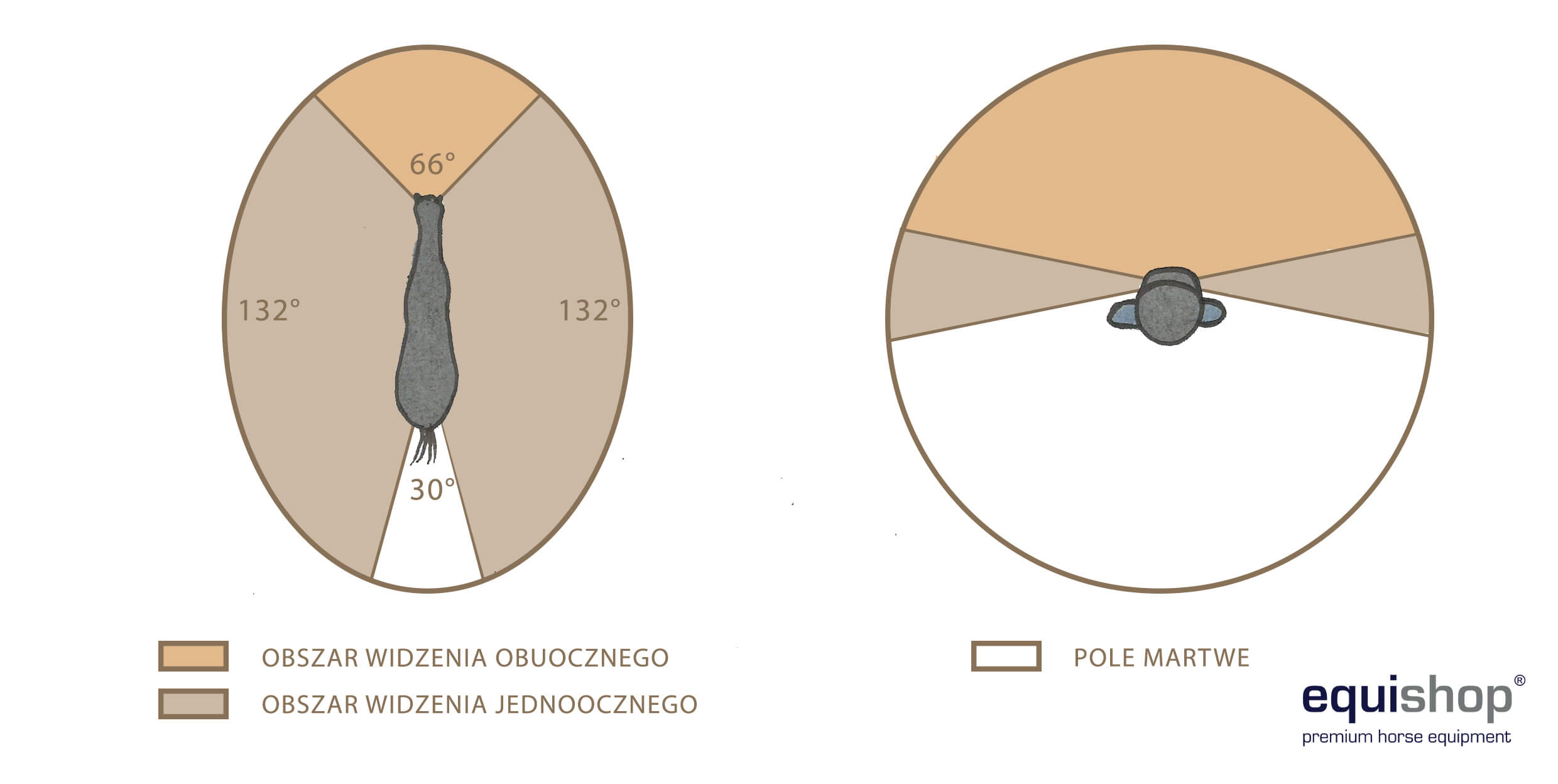
Pole widzenia konia z uniesioną głową oraz człowieka – widok z góry, aut. A. Zieńko
Koń widzi panoramicznie, a jego pole widzenia wynosi aż 330 stopni!Budowa oka oraz sposób widzenia konia wynikają z tego, że jako roślinożerca, mógł paść ofiarą innych zwierząt, dlatego też niezbędne było zapewnienie szerokiego, okrężnego pola widzenia, by możliwe było dostrzeżenie drapieżnika i ucieczka przed nim. Obojgiem oczu widzą konie tylko w kierunku poniżej nosa i nie na wprost, tak więc powoduje to występowanie niewielkiego pola martwego tuż przed czołem konia. Zwierzę nie jest w stanie zauważyć kogoś, stojącego przy jego pysku. Koń chcąc go zobaczyć musi obrócić głowę w lewo bądź w prawo, ewentualnie się cofnąć. Tego typu reakcji nie należy więc karać i traktować jako nieposłuszeństwo np. podczas prezentacji konia przed komisją sędziowską czy weterynaryjną.
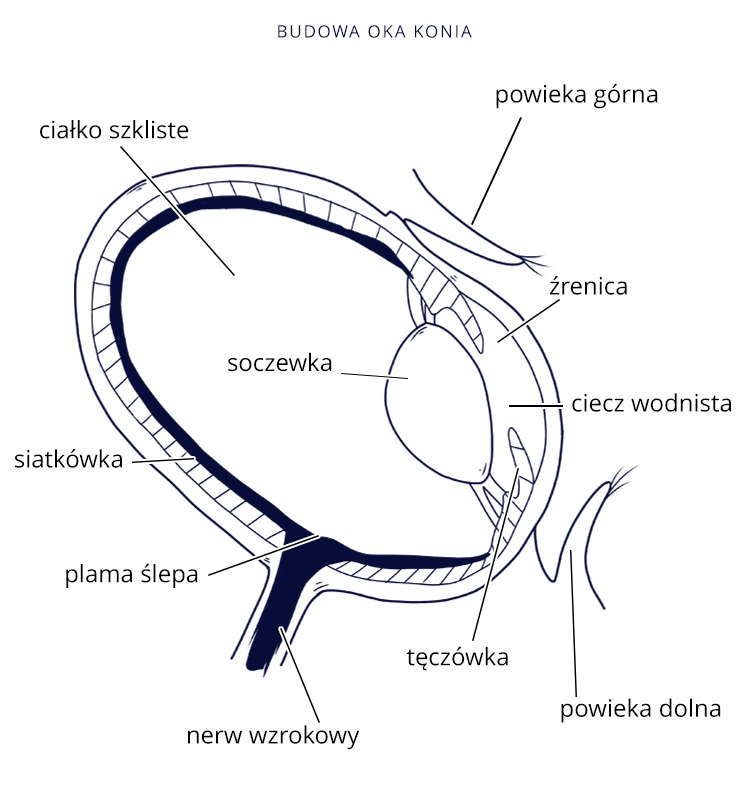
Przed nosem konia martwe pole znajduje się od szerokości rozstawu oczu do około 130 cm na ziemi. Jeśli zwierzę chce zobaczyć wyostrzony i dokładny obraz czegoś, co leży na ziemi np. drągów, musi opuścić szyję i głowę.
Kiedy koń się pasie, jego wzrok skierowany jest ku ziemi, a pole widzenia ogranicza się tylko do jednoocznego. W momencie, gdy zwierzę coś zauważy, podnosi głowę, tak by widzieć obojgiem oczu – panoramicznie. Duże oko konia jest zaletą ponieważ pozwala mu wykryć nawet najmniejszy ruch i to właśnie dlatego wietrzne dni sprawiają, iż konie są poddenerwowane.
Wiele badań i obserwacji reakcji koni doprowadziło do stwierdzenia, iż to, co koń widzi jednym okiem, np. prawym, nie zawsze dociera do lewej półkuli mózgu. Dlatego konie nabierają pewnych nawyków i niektóre czynności, np. siodłanie, akceptują dobrze tylko z jednej strony, bo tak są nauczone. Wyjaśnia to również, dlaczego niektóre elementy i ćwiczenia koń jest w stanie zrozumieć tylko na jedną stronę. W pracy z młodymi końmi często zdarza się, że bardzo łatwo nauczyły się podchodzić do jakiegoś przedmiotu i nie bać się go z jednej strony, ale znajdując się z drugiej już pojawia się problem. Koń zaczyna reagować strachem na przedmiot, który powinien już dobrze znać.
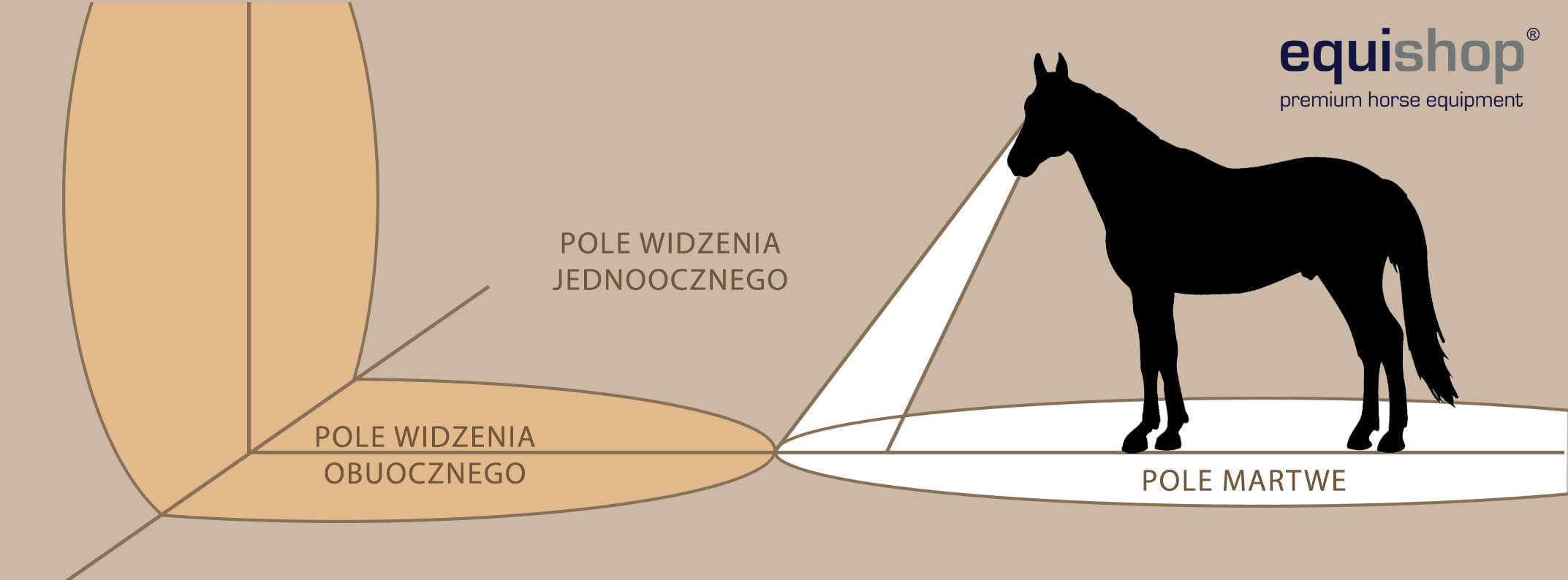
Pole widzenia konia z uniesioną głową – widok z boku, aut. A. Zieńko
Konie ruch widzą w sposób ostry, nawet mniejsze obiekty szybko zmieniające swoje położenie, dlatego potrafi przestraszyć się przelatującego ptaszka czy przebiegającą po stajennym korytarzu mysz. Obiekty, które poruszają się wolno są dużo trudniej zauważalne – co tłumaczy skradanie się i wolne poruszanie wszystkich drapieżników, nim zaatakują.
Udowodniono również, że końskie oko jest zbudowane w taki sposób, iż rejestrowany przez nie obraz jest powiększony o około pięćdziesiąt procent w stosunku do naszej – ludzkiej percepcji. Między innymi dlatego konia straszą przedmioty, które nam wydają się śmieszne. My widzimy małą plastikową butelkę bądź reklamówkę. Zwierzę zaś zauważa duży ruchomy przedmiot, który prawdopodobnie może stanowić dla niego zagrożenie.
2.Obszar widzenia konia podczas ujeżdżenia
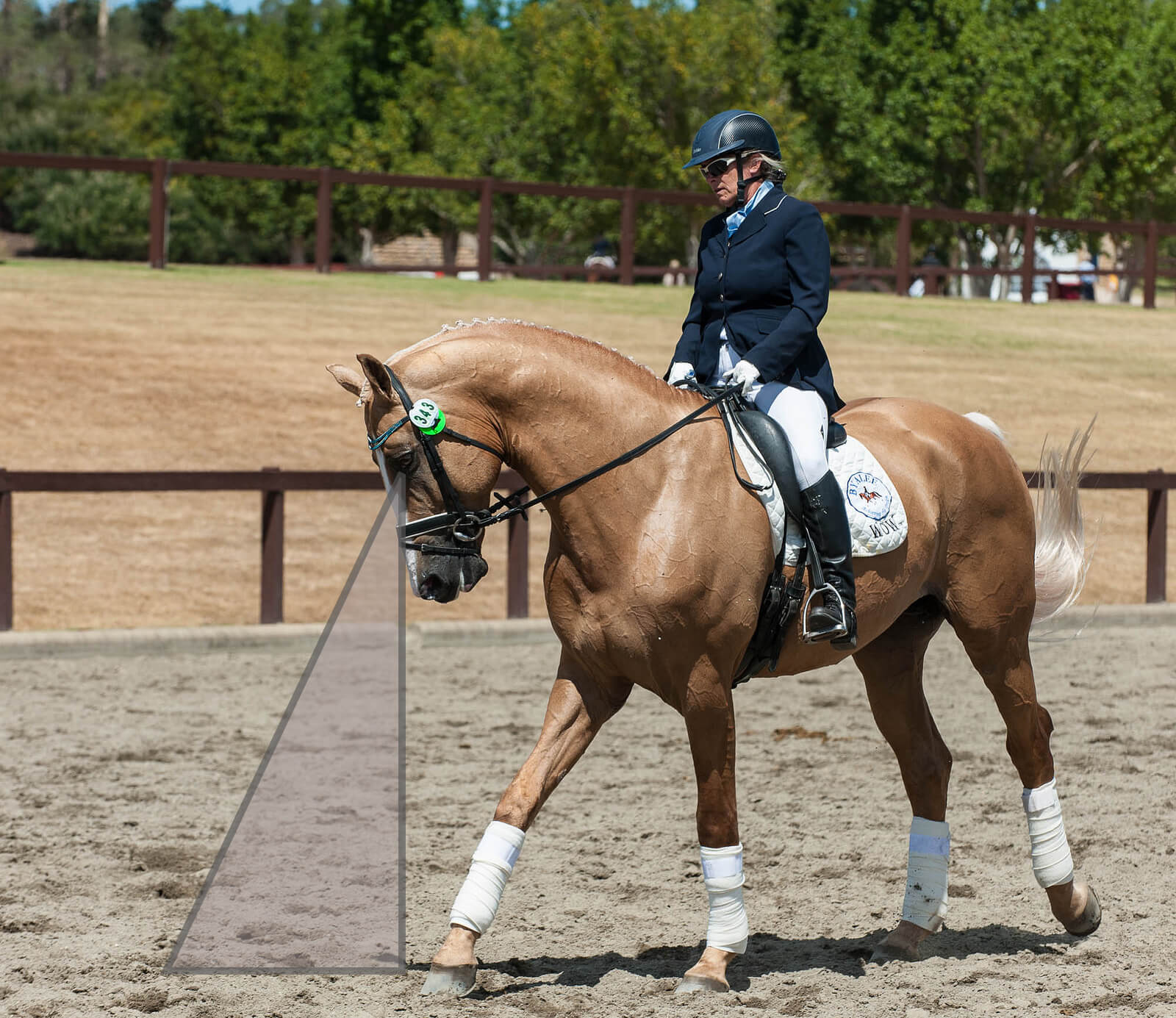
źródło tła: flickr.com
Podczas pełnego zebrania koń ma głowę ustawioną wertykalnie (pionowo) w stosunku do podłoża i nie może widzieć tego, co jest na wprost niego, tylko to co znajduje się poniżej jego nosa. Zwierzę, idące "na wędzidle" musi polegać na jeźdźcu i kierunkach jakie on obiera, jako że koń pracuje wtedy praktycznie na ślepo. Zdarza się, że konie zderzą się w trakcie treningu, jeśli idą naprzeciwko siebie, nie widząc się nawzajem.
3.Obszar widzenia konia podczas skoków
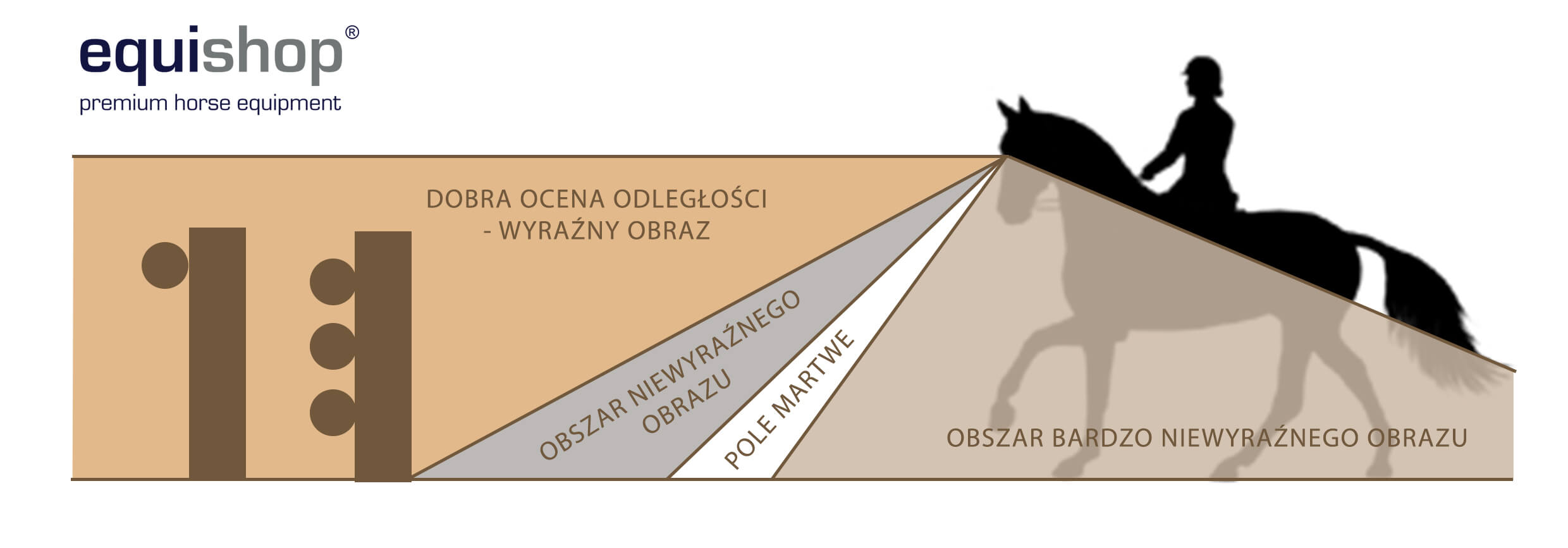
aut. A. Zieńko
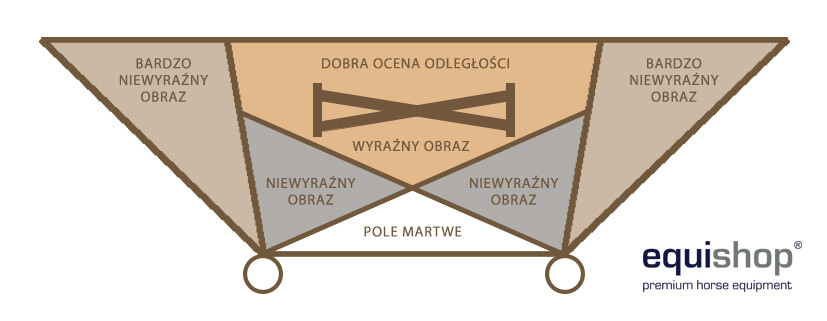
Pole widzenia konia na parę foule przed skokiem, aut. A. Zieńko
Obserwując konie podczas skoków, można zauważyć, że podczas najazdu na przeszkodę, zbliżając się do niej - unoszą głowę. Robią to, by otrzymać lepszy obraz z obojga oczu i zorientować się, jakiej dokładnie jest wysokości i szerokości (używając obojga oczu). Kiedy zwierzę znajduje się już w miejscu wybicia nie jest już w stanie widzieć przeszkody i może polegać tylko na tym co zapamiętał patrząc na nią z daleka – w rzeczywistości więc skacze na pamieć. Konie, by sobie pomóc, próbują w ostatniej chwili podnoszą głowę, by lepiej zobaczyć co skaczą. Z tego powodu warto układać wskazówkę przed przeszkodą – bardzo pomocną, szczególnie w pracy z młodymi końmi, ponieważ ułatwia im odnalezienie momentu i miejsca wybicia.
Wiemy już, jak ważną rolę w skokach odgrywa pamięć wierzchowca, dlatego podczas treningu powinniśmy postawić na utrwalanie poprzez powtarzalność.
4.Czy koń widzi swego jeźdźca?
Konie to klasyczni dalekowidze, mimo że zwykło się uważać, iż mają kiepski wzrok. Mogłoby się wydawać, że ze względu na bardzo szeroki obszar widzenia, powinny one widzieć osobę siedzącą na swoim grzebiecie, jednakże tak się nie dzieje, bo znajduje się ona w ich ślepym polu.
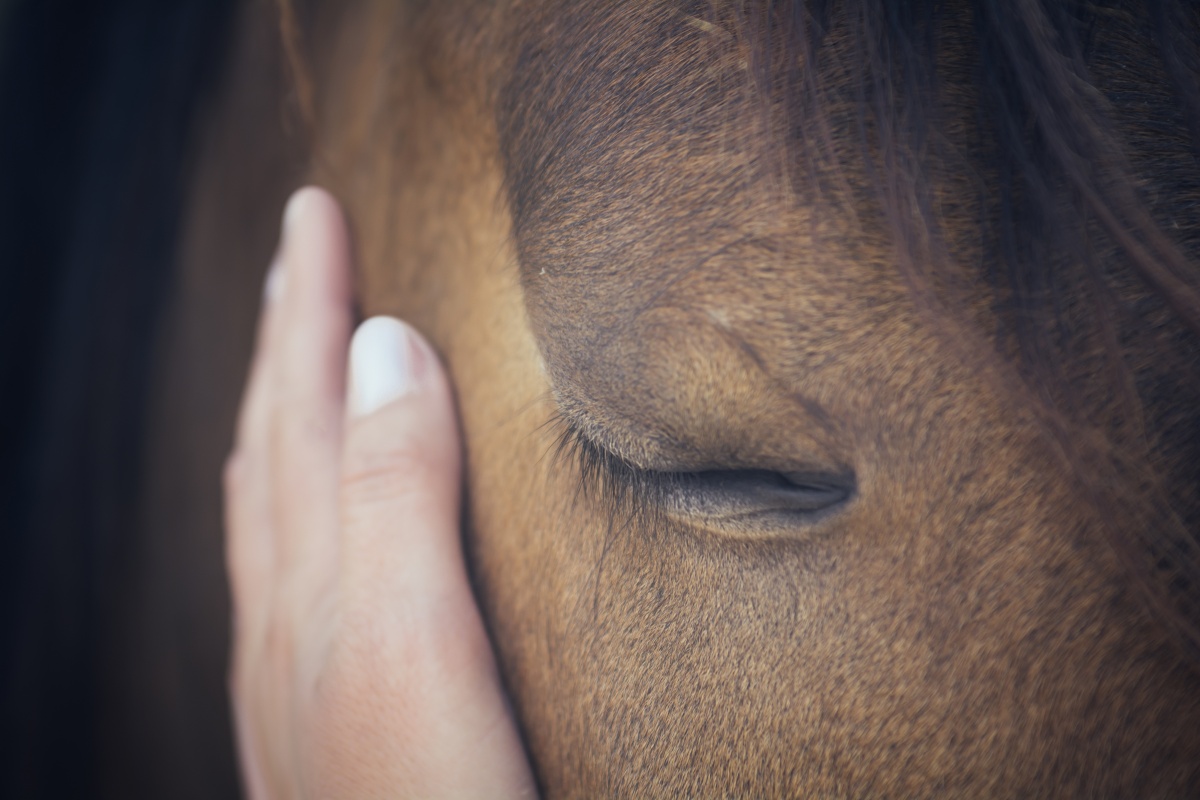
5.Jak dobrze koń widzi szczegóły?
Przeprowadzono pewien eksperyment. Nauczono konie wybierać drzwi z namalowanymi paskami, w odróżnieniu od tych bez pasków, a dobry wybór nagradzano przysmakiem. Rozróżniały one grubość pasków, do momentu aż nie mogły ich oddzielić od szarości. Wyniki udowodniły, że konie widzą co najmniej tak dobrze, jak my, jeśli nie lepiej. Posługując się skalą Snellen'a w celu porównania naszego wzroku i końskiego, okazało się, że ludzie zgodnie z nią widzą 20/20 (tzn. że widzą obiekt (czytanie z tablicy) i człowieka z odległości 20 stóp), a konie 20/33 (dla porównania: psy 20/50, koty 20/75, a szczury 20/300).
6.Widzenie w nocy
Badania wykazują, że konie widzą nocą co najmniej dwa razy lepiej niż człowiek – z pewnością jest to spowodowane wspomnianą wcześniej wzmożoną czujnością, by uchronić się przed drapieżnikiem podczas nocnego wypasu.
Konie dużo lepiej znoszą od ludzi znoszą silne oświetlenie, więc nie oślepia ich światło słoneczne, szczególnie te, odbijające się od śniegu. Jednakże, zwierzęta te, wolniej przyzwyczajają się do zmian oświetlenia, stąd przykładowo mrużenie oczu przez konia po nagłym zapaleniu światła w stajni, która wcześniej była pogrążona w ciemności, bądź trudności z pokonaniem przeszkody, która stoi na granicy światła i cienia.
7.Widzenie w kolorze
Widzenie i rozróżnianie barw wciąż jest kwestią sporną wśród badaczy. Jedni z nich twierdzą, że konie lepiej widzą ciepłe kolory i barwy jaskrawe, problem natomiast sprawiają im kolory ciemne, głębokie.
Aby dowiedzieć się, jak konie widzą barwy, naukowcy przeprowadzili odpowiednie testy, które wykazały że rozróżniają one zawsze czerwony i niebieski, niezależnie od tła na którym się znajdował dany kolor. Sprawdzono również postrzeganie barwy żółtej i zielonej, ustawionych na jaśniejszym tle i okazało się, iż niektóre z nich miały problem z ich właściwym rozpoznaniem.
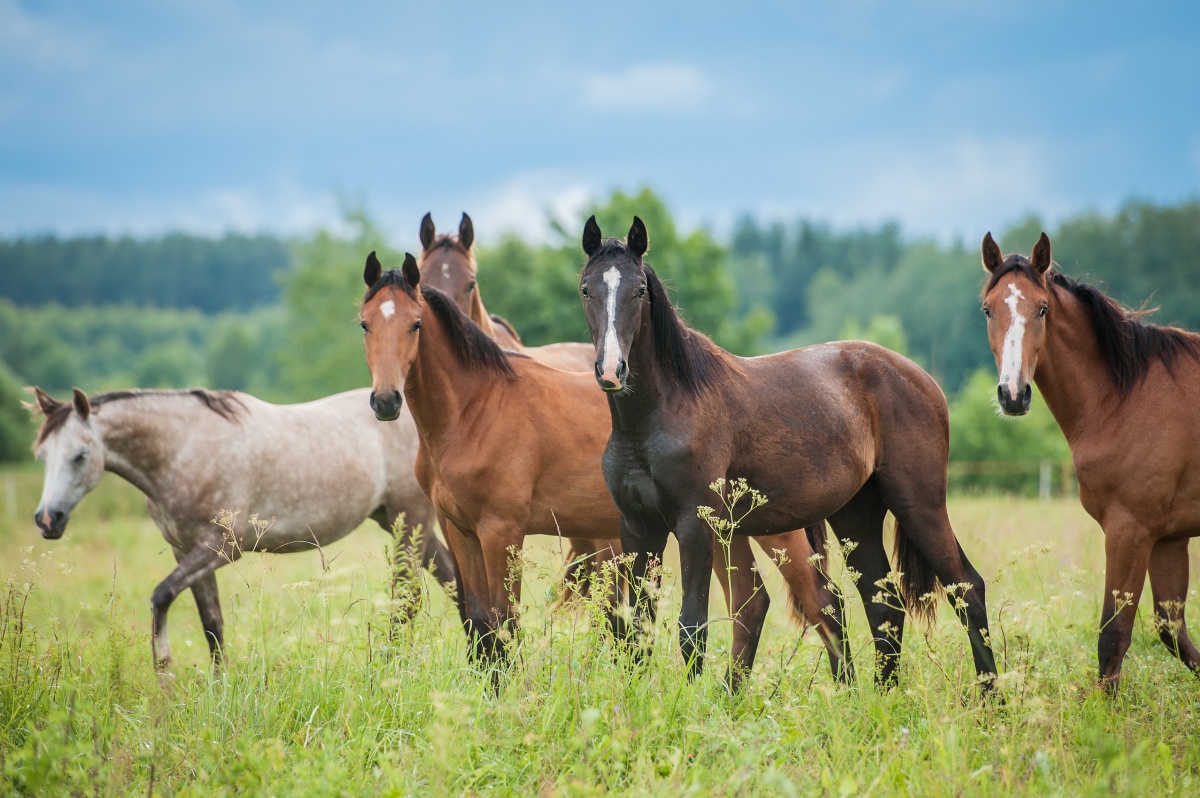
Własne wnioski możemy wysnuć, oglądając zawody w skokach. Parkour jest dla konia trudniejszy, gdy przeszkody są ustawione z jednolicie pomalowanych drągów np. ciemnoniebieskich czy w kolorze drewna. Dużo łatwiejsze jest dla konia pokonanie toru przeszkód, które składają się z drągów pomalowanych w mocno kontrastujących kolorach i to naprzemiennie (np. czerwony-żółty-biały).
Nie da się zrozumieć konia i właściwie z nim postępować, jeśli nie pozna się niezwykłych właściwości jego oczu i sposobu widzenia. Mamy nadzieję, że dzięki temu artykułowi wzrośnie Wasza świadomość, staniecie się bardziej cierpliwi wobec swojego wierzchowca, rozumiejąc jego zachowania i nie karając go w sytuacjach, w których działa zupełnie instynktownie.



 Autor zdjęcia:
Autor zdjęcia:  Pole widzenia konia z uniesioną głową oraz człowieka – widok z góry, aut. A. Zieńko
Pole widzenia konia z uniesioną głową oraz człowieka – widok z góry, aut. A. Zieńko
 Pole widzenia konia z uniesioną głową – widok z boku, aut. A. Zieńko
Pole widzenia konia z uniesioną głową – widok z boku, aut. A. Zieńko źródło tła: flickr.com
źródło tła: flickr.com aut. A. Zieńko
aut. A. Zieńko Pole widzenia konia na parę foule przed skokiem, aut. A. Zieńko
Pole widzenia konia na parę foule przed skokiem, aut. A. Zieńko





